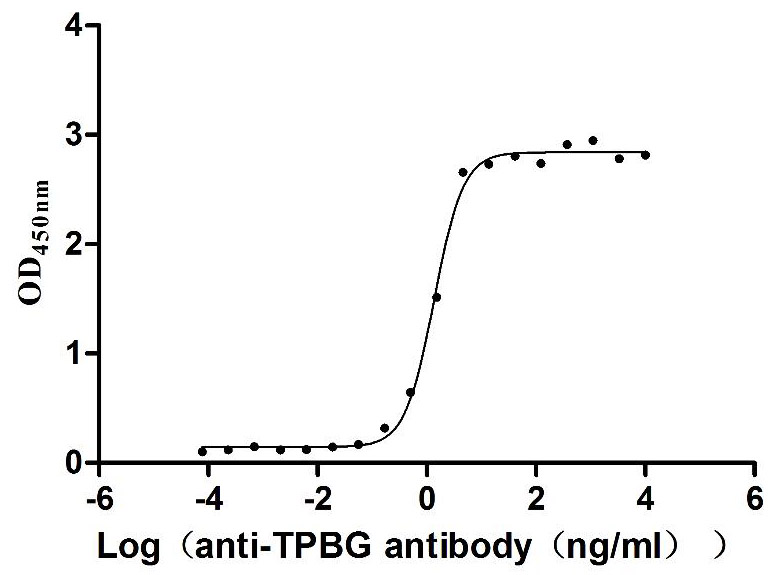Recombinant Mouse POU domain, class 2, transcription factor 1 (Pou2f1)
-
中文名稱:小鼠Pou2f1重組蛋白
-
貨號:CSB-YP018393MO
-
規(guī)格:
-
來源:Yeast
-
其他:
-
中文名稱:小鼠Pou2f1重組蛋白
-
貨號:CSB-EP018393MO
-
規(guī)格:
-
來源:E.coli
-
其他:
-
中文名稱:小鼠Pou2f1重組蛋白
-
貨號:CSB-EP018393MO-B
-
規(guī)格:
-
來源:E.coli
-
共軛:Avi-tag Biotinylated
E. coli biotin ligase (BirA) is highly specific in covalently attaching biotin to the 15 amino acid AviTag peptide. This recombinant protein was biotinylated in vivo by AviTag-BirA technology, which method is BriA catalyzes amide linkage between the biotin and the specific lysine of the AviTag.
-
其他:
-
中文名稱:小鼠Pou2f1重組蛋白
-
貨號:CSB-BP018393MO
-
規(guī)格:
-
來源:Baculovirus
-
其他:
-
中文名稱:小鼠Pou2f1重組蛋白
-
貨號:CSB-MP018393MO
-
規(guī)格:
-
來源:Mammalian cell
-
其他:
產(chǎn)品詳情
-
純度:>85% (SDS-PAGE)
-
基因名:Pou2f1
-
Uniprot No.:
-
別名:Pou2f1; Oct-1; Otf-1; Otf1; POU domain; class 2; transcription factor 1; NF-A1; Octamer-binding protein 1; Oct-1; Octamer-binding transcription factor 1; OTF-1
-
種屬:Mus musculus (Mouse)
-
蛋白長度:Full length protein
-
表達(dá)區(qū)域:1-770
-
氨基酸序列MNNPSETNKS SMESEDASTG TQTNGLDFQK QPVPVGGAIS TAQAQAFLGH LHQVQLAGTS LQAAAQSLNV QSKSSEESGD SQQSSQPSSQ PPSVQSAIPQ TQLMLAGGQI TGLTLTPAQQ QLLLQQAQAQ AQLLAAAVQQ HSASQQHSAA GATISASAAT PMTQIPLSQP IQIAQDLQQL QQLQQQNLNL QQFVLVHPTT NLQPAQFIIS QTPQGQQGLL QAQNLLTQLP QQSQANLLQP QPSITLTSQP TTPTRTIAAA SVQTLPQSQS TPKRIDTPSL EEPSDLEELE QFAKTFKQRR IKLGFTQGDV GLAMGKLYGN DFSQTTISRF EALNLSFKNM CKLKPLLEKW LNDAENLSSD STASSPSALN SPGLGAEGLN RRRKKRTSIE TNIRVALEKS FMENQKPTSE DITLIAEQLN MEKEVIRVWF CNRRQKEKRI NPPSSGGTSS SPIKAIFPSP ASLVATTPSL VTSSTATTLT VNPVLPLTSA AVTNLSLTDQ DLRRGCSWEV LRSLPDRVTT TAGTTDSTSN NNTATVISTA PPASSAVTSP SLSPSPSASA STSEASSASE TNTTQTTSTP LPSPLGASQV MVTTPGLQTA AAALQGAAQL PANASLAAMA AAAGLSPGLM APSQFAAGGA LLSLSPGTLG SALSPALMSN STLATIQALA SSGSLPITSL DATGNLVFAN AGGAPNIVTA PLFLNPQNLS LLTSNPVSLV SAAAASTGNS APTASLHASS TSTESIQSSL FTVASASGPA STTTAASKAQ
-
蛋白標(biāo)簽:Tag?type?will?be?determined?during?the?manufacturing?process.
The tag type will be determined during production process. If you have specified tag type, please tell us and we will develop the specified tag preferentially. -
產(chǎn)品提供形式:Lyophilized powder
Note: We will preferentially ship the format that we have in stock, however, if you have any special requirement for the format, please remark your requirement when placing the order, we will prepare according to your demand. -
復(fù)溶:We recommend that this vial be briefly centrifuged prior to opening to bring the contents to the bottom. Please reconstitute protein in deionized sterile water to a concentration of 0.1-1.0 mg/mL.We recommend to add 5-50% of glycerol (final concentration) and aliquot for long-term storage at -20℃/-80℃. Our default final concentration of glycerol is 50%. Customers could use it as reference.
-
儲存條件:Store at -20°C/-80°C upon receipt, aliquoting is necessary for mutiple use. Avoid repeated freeze-thaw cycles.
-
保質(zhì)期:The shelf life is related to many factors, storage state, buffer ingredients, storage temperature and the stability of the protein itself.
Generally, the shelf life of liquid form is 6 months at -20°C/-80°C. The shelf life of lyophilized form is 12 months at -20°C/-80°C. -
貨期:Delivery time may differ from different purchasing way or location, please kindly consult your local distributors for specific delivery time.Note: All of our proteins are default shipped with normal blue ice packs, if you request to ship with dry ice, please communicate with us in advance and extra fees will be charged.
-
注意事項(xiàng):Repeated freezing and thawing is not recommended. Store working aliquots at 4°C for up to one week.
-
Datasheet :Please contact us to get it.
靶點(diǎn)詳情
-
功能:Transcription factor that binds to the octamer motif (5'-ATTTGCAT-3') and activates the promoters of the genes for some small nuclear RNAs (snRNA) and of genes such as those for histone H2B and immunoglobulins. Modulates transcription transactivation by NR3C1, AR and PGR.
-
基因功能參考文獻(xiàn):
- In embryonic stem cells, Oct1 co-occupies a specific set of targets with Oct4, but does not occupy differentially expressed developmental targets. Instead, Oct1 occupies these targets as cells differentiate and Oct4 declines. PMID: 28537559
- At low oxLDL levels LOX-1 activates the protective Oct-1/SIRT1 pathway, while at higher levels of the lipoprotein switches to the thrombogenic ERK1/2 pathway. PMID: 28199510
- Study conclude that pentamidine interacts with multiple transporters, is taken into brain endothelial cells by OCT1 transporter and is extruded into the blood by ATP-dependent mechanisms. These interactions along with the predominant presence of OCT1 in the luminal membrane of the BBB contribute to the limited entry of pentamidine into the brain. PMID: 28362799
- These results suggest that Oct-1 and GATA-3/Oct-2 direct Th2 cytokine gene expression in a cooperative manner. PMID: 26840450
- levels of microRNA-451 (miR-451) are negatively regulated through the phosphorylation and inactivation of its direct transcriptional activator OCT1 by 5' AMP-activated protein kinase PMID: 25937278
- Oct1 mRNA expression was decreased in mice with both ob/ob and methionine/choline deficiency models of nonalcoholic steatohepatitis. PMID: 26016715
- OCT1 is a driver of synbindin-mediated ERK signalling and a promising marker for the prognosis and molecular subtyping of gastric cancer. PMID: 24717932
- studies implicate OCT1 as well as metformin in thiamine disposition, suggesting an intriguing and parallel mechanism for metformin and its major hepatic transporter in metabolic function. PMID: 24961373
- inhibition of the DNA binding activity of transcriptional repressor OCT-1 is a mechanism by which ethanol up-regulates Slc711 expression. PMID: 23592778
- mammary cells express beta-casein in response to prolactin in a pathway that involves gap junction intracellular communication and OCT-1 and is independent of STAT5 nuclear translocation PMID: 22142338
- Oct1 plays an important role not only in the pharmacokinetics of cis-diammine(pyridine)chloroplatinum(II)(CDPCP), but also in its toxicities. PMID: 21104302
- role for Oct1 in mitosis PMID: 21897860
- Oct-1 serves as a sensor for both metabolic as well as stress/survival signals. PMID: 21099293
- Oct1 appears to be a critical mediator of the growth arrest induced by mTOR inhibition via the control of p27(Kip1) expression. PMID: 20935455
- Oct1 is a switchable stabilizer of repressed and inducible states of transcription PMID: 21051540
- Oct1 is required in th embryo proper from late gastrulation stages onwards. PMID: 20876643
- OCT1 and OCT2 are important for N-methyl-4-phenyl-1,2,3,6-tetrahydropyridine (MPTP) transfer across the blood-brain barrier and amantadine reduces the blood-brain barrier transfer of MPTP and MPTP-induced dopaminergic toxicity in rodents. PMID: 20477935
- analysis of a tethered-hopping model for protein-DNA binding and unbinding based on Sox2-Oct1-Hoxb1 ternary complex simulations PMID: 20371328
- PD-L2 expression is regulated by two different promoters that function in a lineage-specific manner, with the B-1-specific promoter being constitutively active as a result of Oct1 and Oct2 binding. PMID: 19710692
- Involvement of Oct-1 in transcriptional activation of beta-casein gene expression in mouse mammary gland PMID: 12151092
- episodic GnRH gene expression is a promoter-dependent phenomenon, which is mediated by Oct-1 interaction with regulatory elements in the NSE region PMID: 12198245
- On evidence of these and published data, it was assumed that a set of oct-1 isoforms is present in the cell, reflecting the complexity of expression regulation of oct-1 and the multiplicity of its functions. PMID: 12624956
- transcription of the Oct-1 gene is regulated by two promoters located upstream of the exon 1U and upstream of the exon 1L PMID: 12853155
- role for Oct-1 in herpes simplex virus replication PMID: 14745036
- Oct-1 protein is dispensable for B cell development and Ig transcription PMID: 14762167
- Oct-1 and the TALE homeodomain proteins have roles in regulating the expression of the GnRH gene in neurons PMID: 15138251
- Three distinct transcriptional start sites of CD45 for binding Oct1 and PU.1 transcription factors were studied. PMID: 16616894
- Genetic combination of Sox2 and Pou2f1 mutant alleles results in impaired induction of the lens placode, an ocular phenotype that includes anophthalmia, and a complete failure of nasal placode induction. PMID: 17140559
- using a Oct1 target screen we identify a large number of genes targeted by Oct1 specifically under conditions of stress, and show that several inducible Oct1 targets are also inducibly bound by Oct4 in embryonic stem cells following stress exposure PMID: 19171782
- Oct1, the genes it regulates and the pathways these genes affect could be used as targets for new modes of cancer therapy. PMID: 19219035
- Oct-1 acts at multiple but distinct TAAT sites to support GnRHR basal transcription. PMID: 19333792
顯示更多
收起更多
-
亞細(xì)胞定位:Nucleus.
-
蛋白家族:POU transcription factor family, Class-2 subfamily
-
組織特異性:Ubiquitously expressed. However, isoforms 4 and 5 are only expressed in lymphocytes.
-
數(shù)據(jù)庫鏈接:
Most popular with customers
-
Recombinant Human Tumor necrosis factor ligand superfamily member 18 (TNFSF18), partial (Active)
Express system: Mammalian cell
Species: Homo sapiens (Human)
-
Recombinant Human Tumor necrosis factor receptor superfamily member 8 (TNFRSF8), partial (Active)
Express system: Mammalian cell
Species: Homo sapiens (Human)
-
Recombinant Mouse Desmoglein-3 (Dsg3), partial (Active)
Express system: Mammalian cell
Species: Mus musculus (Mouse)
-
Recombinant Mouse Prolactin receptor (Prlr), partial (Active)
Express system: Mammalian cell
Species: Mus musculus (Mouse)
-
Recombinant Rat Microtubule-associated protein tau (Mapt) (Active)
Express system: Mammalian cell
Species: Rattus norvegicus (Rat)
-
Recombinant Macaca fascicularis Claudin 18.2 (CLDN18.2)-VLPs (Active)
Express system: Mammalian cell
Species: Macaca fascicularis (Crab-eating macaque) (Cynomolgus monkey)
-
Recombinant Human Claudin-6 (CLDN6)-VLPs (Active)
Express system: Mammalian cell
Species: Homo sapiens (Human)
-
Recombinant Human Trophoblast glycoprotein (TPBG), partial (Active)
Express system: Mammalian cell
Species: Homo sapiens (Human)



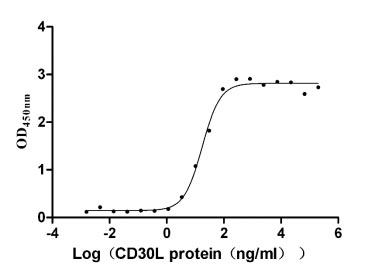
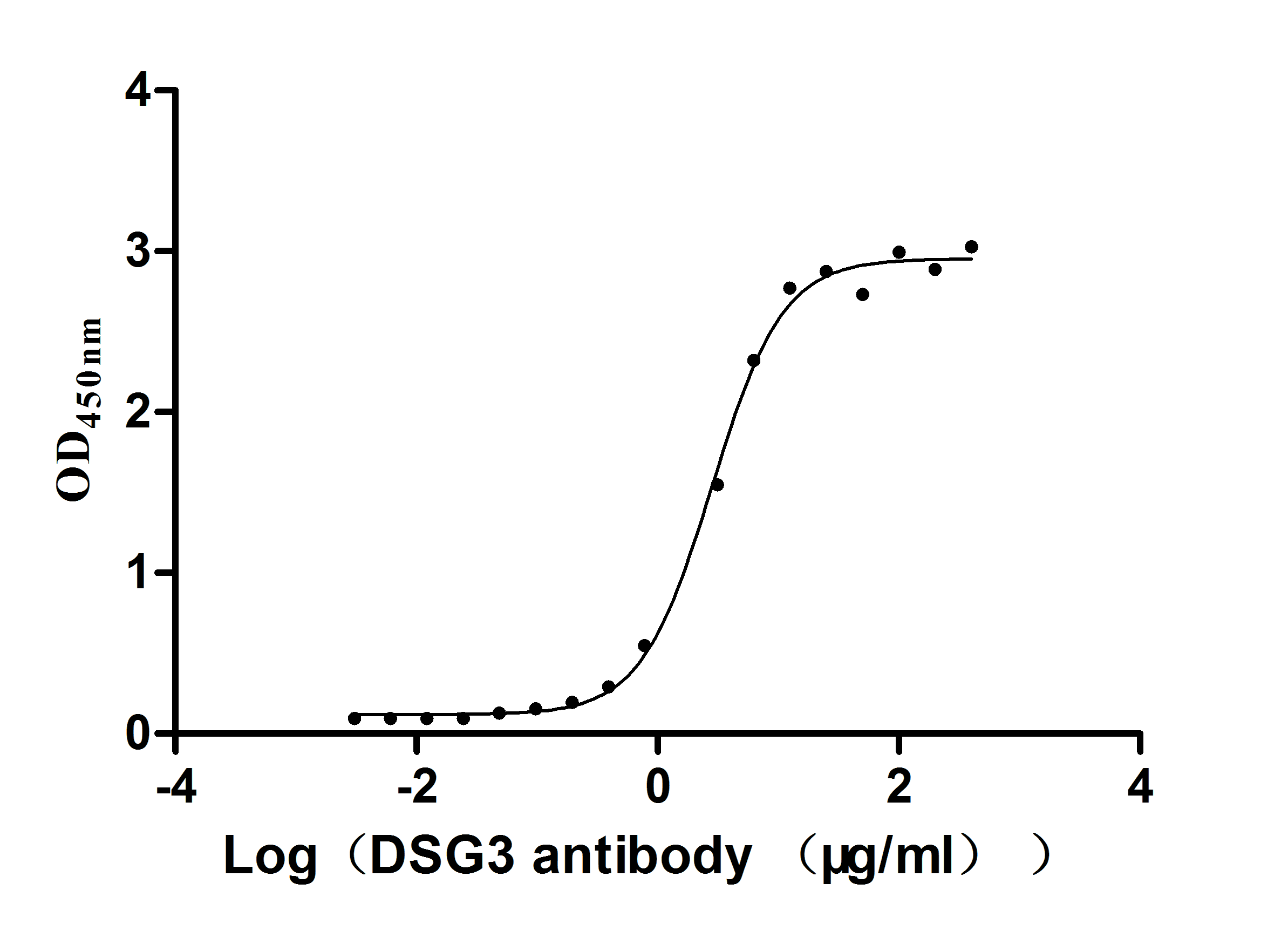
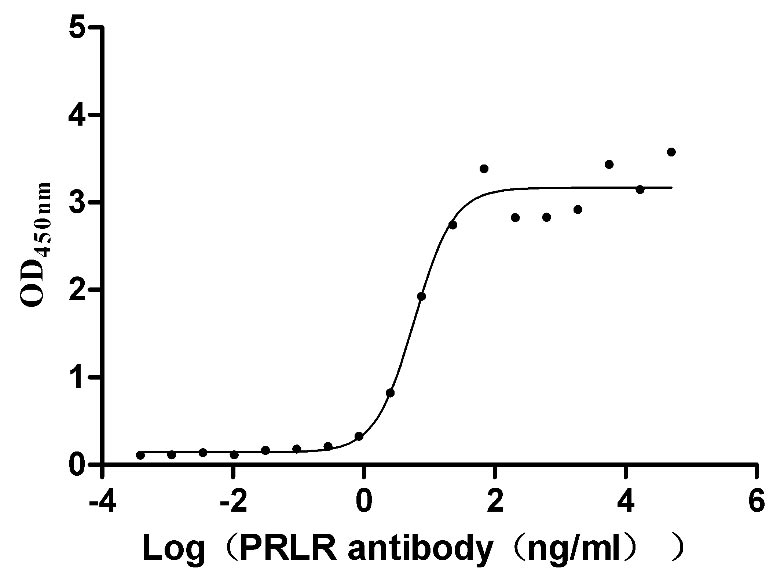
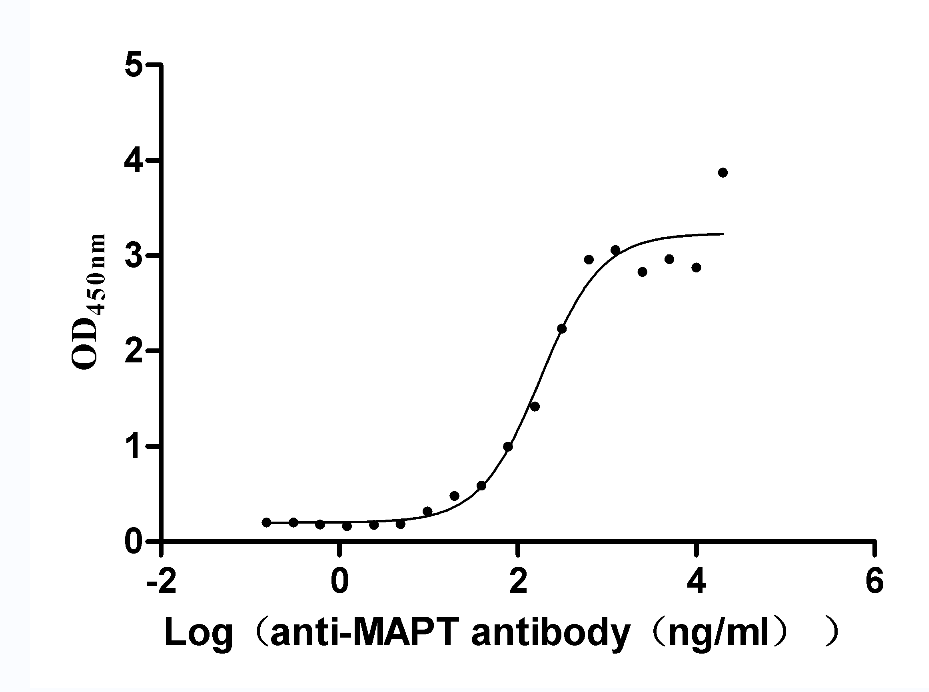
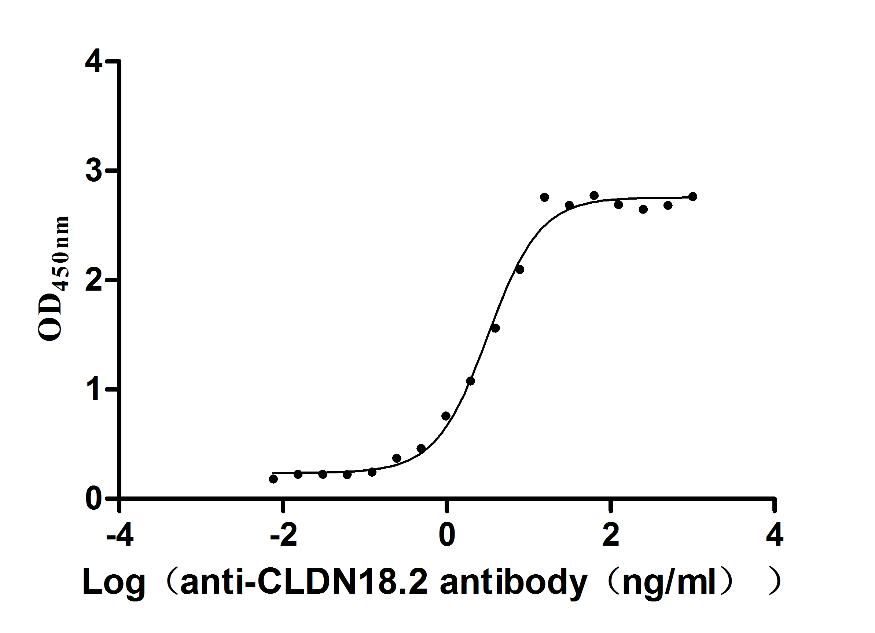
-AC1.jpg)
